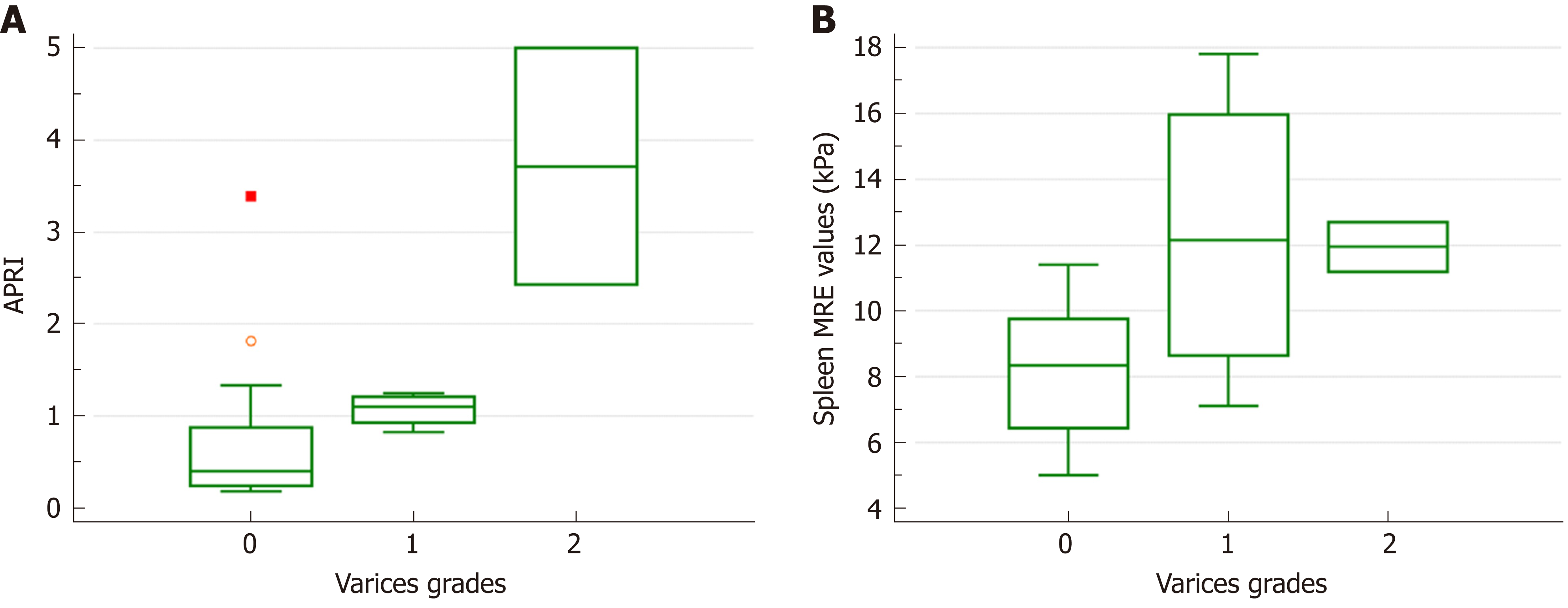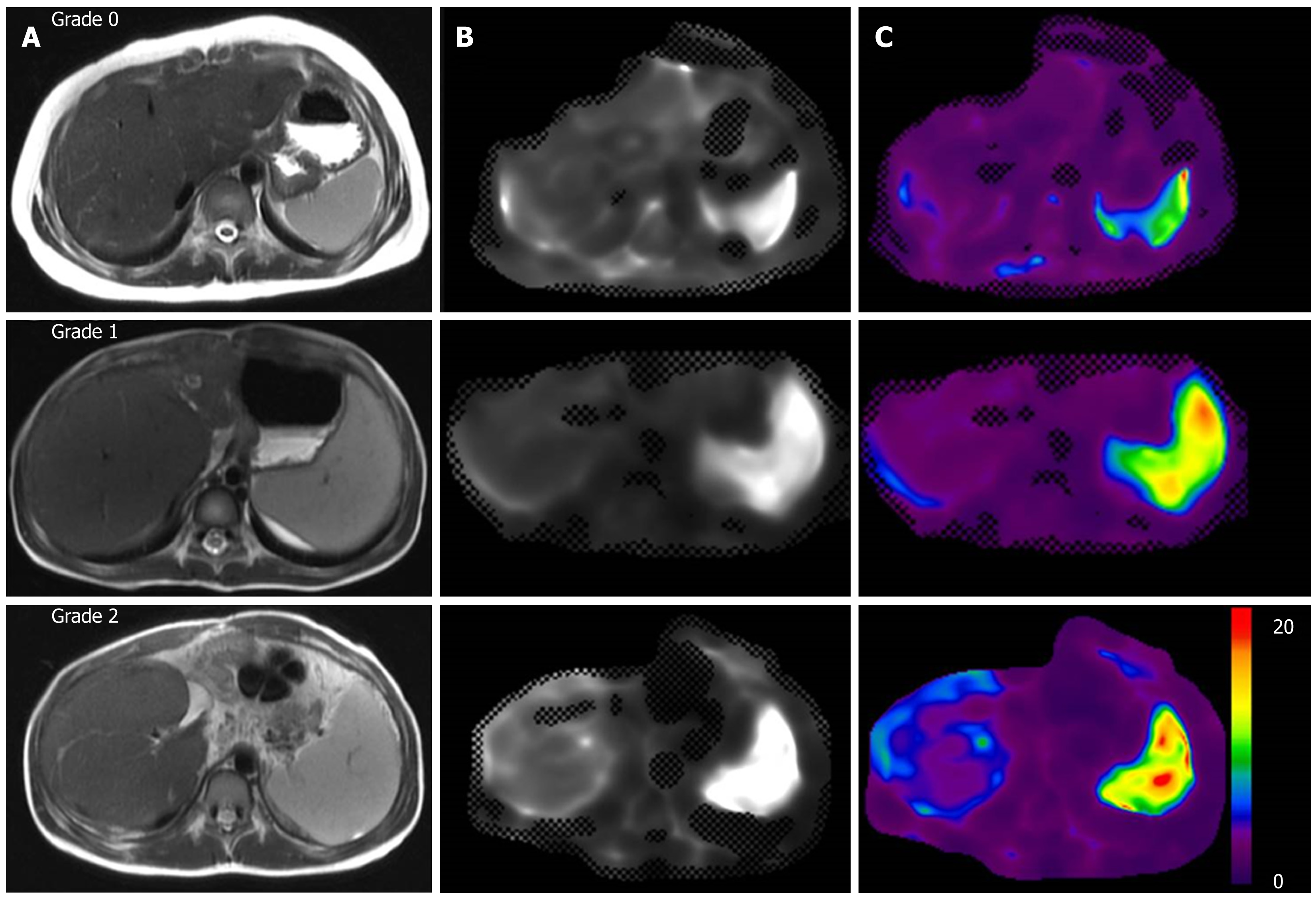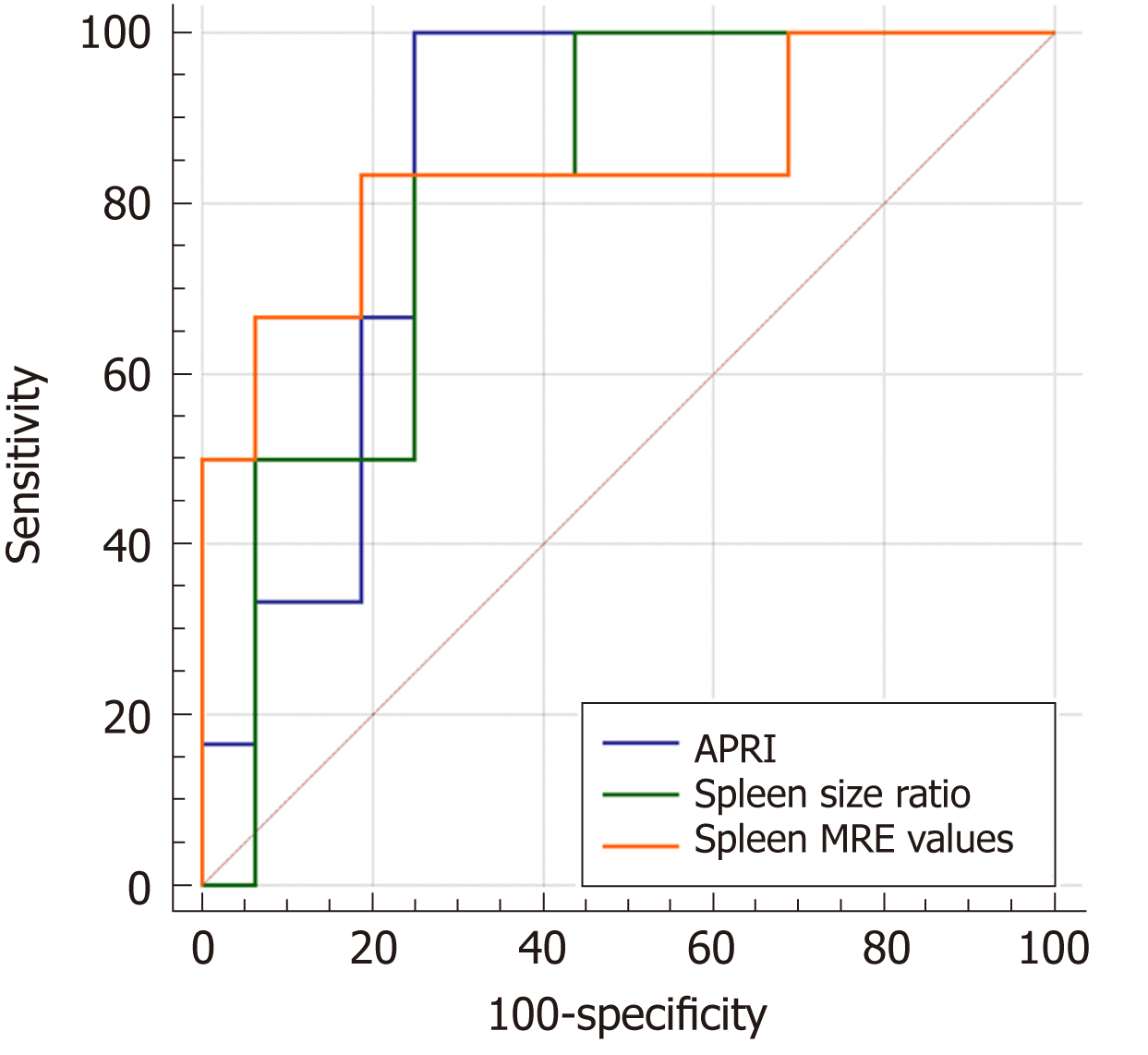Copyright
©The Author(s) 2019.
World J Gastroenterol. Jan 21, 2019; 25(3): 367-377
Published online Jan 21, 2019. doi: 10.3748/wjg.v25.i3.367
Published online Jan 21, 2019. doi: 10.3748/wjg.v25.i3.367
Figure 1 Box-and-whisker plots for the comparison of varices grades.
The graphs are shown for (A) the aspartate aminotransferase to platelet ratio index (APRI) and (B) spleen magnetic resonance elastography (MRE) values according to the grade of gastroesophageal varices. Among the different varices grades, there were significant differences in the APRI (P = 0.029) and spleen MRE values (P = 0.045), but not in the spleen size ratio (P = 0.084) or liver MRE values (P = 0.795). MRE: Magnetic resonance elastography; APRI: Aspartate aminotransferase to platelet ratio index.
Figure 2 Liver magnetic resonance imaging of biliary atresia patients with different varices grades.
Liver magnetic resonance imaging images are shown from three respective patients with grade 0 (first row), grade 1 (second row) and grade 2 (third row) gastroesophageal varices, including (A) axial single-shot fast spin-echo T2-weighted images, (B) magnitude images and (C) post-processed shear stiffness maps with color-coded elastograms from 0 to 20 kPa. The elastograms display the progressively increasing splenic stiffness in these patients.
Figure 3 Comparison of area under the curve analyses for predicting varices.
The area under the curve was 0.844 for the aspartate aminotransferase to platelet ratio index (cut-off, 0.65), 0.813 for the spleen size ratio (cut-off, 1.08) and 0.844 for the spleen magnetic resonance elastography values (cut-off, 9.9 kPa) for predicting gastroesophageal varices. The diagnostic performance did not differ among these three methods. APRI: Aspartate aminotransferase to platelet ratio index.
- Citation: Yoon H, Shin HJ, Kim MJ, Han SJ, Koh H, Kim S, Lee MJ. Predicting gastroesophageal varices through spleen magnetic resonance elastography in pediatric liver fibrosis. World J Gastroenterol 2019; 25(3): 367-377
- URL: https://www.wjgnet.com/1007-9327/full/v25/i3/367.htm
- DOI: https://dx.doi.org/10.3748/wjg.v25.i3.367











